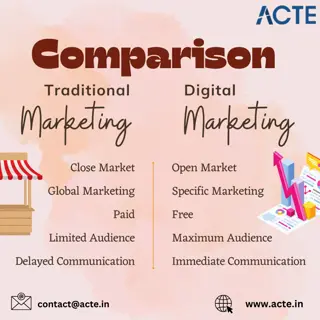Understanding the Role of Marketing Departments in Businesses
Marketing departments play a crucial role in identifying customer needs, satisfying them profitably, and building customer loyalty. They consist of various sections such as sales, market research, promotion, and distribution, each with specific responsibilities aimed at enhancing brand awareness and increasing sales. By focusing on customer relationships and adapting to market changes, marketing departments contribute significantly to the success of businesses.
Download Presentation

Please find below an Image/Link to download the presentation.
The content on the website is provided AS IS for your information and personal use only. It may not be sold, licensed, or shared on other websites without obtaining consent from the author. Download presentation by click this link. If you encounter any issues during the download, it is possible that the publisher has removed the file from their server.
E N D
Presentation Transcript
Marketing , competition and the customer.
The marketing department Marketing is identifying customer wants and satisfying them profitably . Customer is a person ,business or other organization which buys goods or services from a business. Most business , unless they are very small , will have a marketing department. In a large public limited company , the marketing director will have people responsible for different sections within the marketing department.
The structure of a typical marketing department Marketing Director Sales Market Research Promotion Distribution Regional sales manager Regional sales manager Advertising Promotion
Large businesses will have different sections within their marketing department: The sales team: is responsible for the sales of the product. It will usually have separate sections for each region to which the product is distributed. The market research section is responsible for : Finding out customers needs Market changes and the impact of competitors actions. Research information to help make decisions about development of new products , pricing levels, sales and promotion strategies.
The promotion section Promotion is the efforts used to raise awareness and interest in a product ,service or brand to increase sales and brand loyalty. The section is responsible for : organizing and producing the advertising for products. They will have a marketing budget For example adverts are filmed to be in television ,or designed to be in newspapers. Decides on the types of promotion that will be included in the campaigns For example Buy one get one free , giveaways Decides on which types of advertising media will be the most effective. Distribution transports the products to the market.
The Role of marketing The central role of marketing undertakes the following: Identify customer needs : Finding out what kind of products or services customers want. The prices they are willing to pay . Where and how they want to buy these products. What after sales services they might want. Maintain customer loyalty and build customer relationships by building customers relationships to gain information about customers and finding out if the products are continuing to meet their needs. Customer loyalty is when existing customers continually buy products from the same business. Customer relationships is communicating with customers to encourage them to become loyal to the business and its products.
The importance of the marketing department If the marketing department is successful in identifying customer requirements and predicting their future needs , it should enables the business to: Raise customer awareness of the business product or service. Increase revenue and profitability Increase or maintain market share Enter new markets Develop new products or improving existing products.
Understanding market changes Why customer / consumer spending patterns change? Consumer tastes and fashions change 1. Changes in technology as new products being developed , old versions do not have high sales anymore. 2. Change in incomes if the economy have high unemployment's then many consumers will buy cheaper products. 3. Why have some markets become more competitive? 1. Internet and ecommerce has meant that consumers can search for products and buy from overseas markets.
How can businesses respond to changing spending patterns and increased competition ? In order to remain successful , a business to do the following : Maintain good customers relationships. Keep improving its existing products and develop new products. Keep costs low that will help keep prices low.
What is meant by a market ? The market : The total number of customers and potential customers , as well as sellers , for a particular good or service. Markets are either : Mass markets or Niche markets
Mass market : is where there is a very large number of sales of a product. products are designed to appeal to the whole market and most customers. For example: aspirin ,washing soap Advantages of selling to a mass market : Total sales in these markets are very high Opportunities for business growth due to large potential sales. Disadvantages : High levels of competition between businesses selling similar products High costs of advertising and promotion 1. 2. 1. 2.
Niche market : is a small, usually specialized, segment of a much larger market. products designed and sold to a vey small number of customers who form a small segment of the large market . For examples: Rolex watches , designed clothes. Advantages of a niche market: Small businesses may be able to sell successfully to a niche market. The needs of consumers can be more closely focused on. Disadvantages: Niche markets are usually small and therefore have limited sales potential. often businesses in the niche market will be specialize in just one product. 1. 2. 1. 2.
Market segments Market segmentation is when a market is broken down into sub-groups which share similar characteristics and preferences. Market segmentation recognizes that potential users of goods and services are not the same and what appeals to one set of customers may not appeal to others. So the marketing department will divide the whole market into sub-groups, segments. Ways of segmenting a market: By socio- economic group (income and jobs) By age By gender By region/location By use of product (as promoting cars for business use) By lifestyle (single or married with kids)























